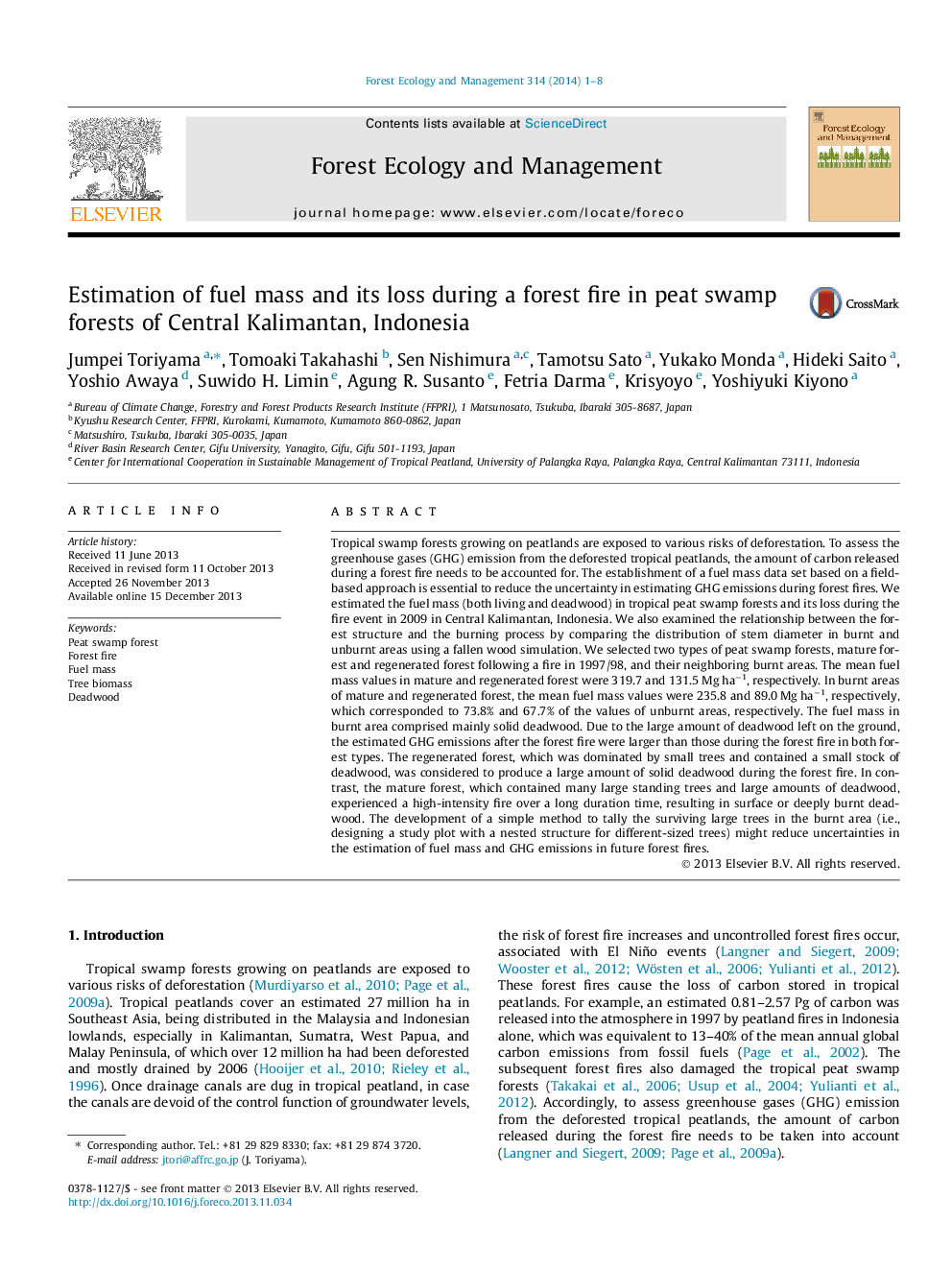| کد مقاله | کد نشریه | سال انتشار | مقاله انگلیسی | نسخه تمام متن |
|---|---|---|---|---|
| 86928 | 159223 | 2014 | 8 صفحه PDF | دانلود رایگان |
• Tropical swamp forests growing on peatlands are exposed to the risk of forest fires.
• We compared the fuel mass of peat swamp forests in burnt and unburnt areas.
• The fuel mass in burnt areas consisted mainly of solid deadwood.
• The condition of fallen deadwood following a fire differed between forest types.
• The estimated GHG emission after a forest fire was larger than that during the fire.
Tropical swamp forests growing on peatlands are exposed to various risks of deforestation. To assess the greenhouse gases (GHG) emission from the deforested tropical peatlands, the amount of carbon released during a forest fire needs to be accounted for. The establishment of a fuel mass data set based on a field-based approach is essential to reduce the uncertainty in estimating GHG emissions during forest fires. We estimated the fuel mass (both living and deadwood) in tropical peat swamp forests and its loss during the fire event in 2009 in Central Kalimantan, Indonesia. We also examined the relationship between the forest structure and the burning process by comparing the distribution of stem diameter in burnt and unburnt areas using a fallen wood simulation. We selected two types of peat swamp forests, mature forest and regenerated forest following a fire in 1997/98, and their neighboring burnt areas. The mean fuel mass values in mature and regenerated forest were 319.7 and 131.5 Mg ha−1, respectively. In burnt areas of mature and regenerated forest, the mean fuel mass values were 235.8 and 89.0 Mg ha−1, respectively, which corresponded to 73.8% and 67.7% of the values of unburnt areas, respectively. The fuel mass in burnt area comprised mainly solid deadwood. Due to the large amount of deadwood left on the ground, the estimated GHG emissions after the forest fire were larger than those during the forest fire in both forest types. The regenerated forest, which was dominated by small trees and contained a small stock of deadwood, was considered to produce a large amount of solid deadwood during the forest fire. In contrast, the mature forest, which contained many large standing trees and large amounts of deadwood, experienced a high-intensity fire over a long duration time, resulting in surface or deeply burnt deadwood. The development of a simple method to tally the surviving large trees in the burnt area (i.e., designing a study plot with a nested structure for different-sized trees) might reduce uncertainties in the estimation of fuel mass and GHG emissions in future forest fires.
Journal: Forest Ecology and Management - Volume 314, 15 February 2014, Pages 1–8
